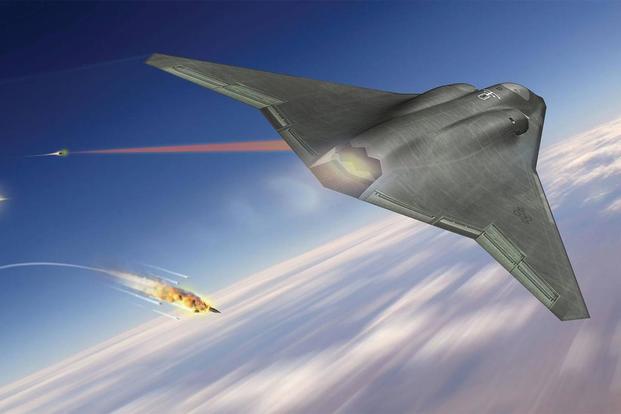The Air Force has long made clear it wants to conduct rapid research and testing on new equipment that can give it a competitive edge against near-peer adversaries, such as China and Russia, while also prototyping weapons for the advanced fight.
And it plans to start investing heavily in that goal soon, its new budget request for Fiscal 2019 shows. The service asked for $504 million next year for its next-generation air dominance research, development, test and evaluation program, according to the document.
And that's not all: In its future years defense program [FYDP], showing the next five years of planned spending, the Air Force shows a planned investment of roughly $11 billion over the course of five years for RTD&E on next-gen air dominance.
But what will the end product be?
Related content:
- US Losing Its Advantage in Race for Hypersonic Technology: Selva
- Thinking Outside the Box for the Air Force's Next-Gen Aircraft
- Next-Gen Fighter, Nuclear Cruise Missile Eyed for Funding Boost
"Under next-generation air dominance, we're investing in a family of systems," Air Force spokeswoman Ann Stefanek told Military.com on Tuesday. "We're going through the analysis of alternatives now, and that will help define the capabilities of the future."
The service in 2016 debuted its Air Superiority 2030 roadmap, which includes the sustainment of old fighters and new jets such as the F-22 Raptor and F-35 Joint Strike Fighter, but also outlines next-gen air dominance, defined as advanced fighter aircraft, sensors or weapons -- or all of the above -- in a growing and unpredictable threat environment.
Officials say the Air Force's next-generation platform may defy traditional categorization.
"As we went through the [study], we specifically precluded ourselves from using the word ‘fighter,’" said Air Force Brig. Gen. Alexus Grynkewich, deputy director of global operations at the Pentagon. Grynkewich served as the lead chief of strategic planning for the Air Superiority 2030 Enterprise Capabilities Collaboration Team.
"Air combat is not all about fighter aircraft dogfighting anymore ... it's about bringing a network to bear, and attributes [penetrating counter air] needs in terms of range, persistence, survivability, lethality," Grynkewich said in July.
Next-generation air dominance was once synonymous with penetrating counter air, or PCA. To many, the concept of an advanced, stealthy and hypersonic fighter aircraft came to mind.
But the Air Force is keen on moving away from a "one-size-fits-all" idea and toward a family of systems approach. Officials have said it helps when the service turns to the defense industry for contributions to the program.
While munitions, lasers, sensors and speed are on the table, Air Force Secretary Heather Wilson this week said the air superiority focus coincides with a renewed emphasis on electronic warfare, networked capabilities, and control of the electromagnetic spectrum.
Wilson highlighted China's recent push to modernize in these areas.
"[China] is modernizing very quickly -- they're modernizing their air defenses, but also their air-to-air capability is really modernizing across the board. It is the pacing threat for the U.S. Air Force because of the pace of their modernization," she told reporters at the Pentagon on Tuesday.
Wilson said China's quick pace is driving the Air Force to react. There has been explicit recognition "of the re-emergence of great power competition," she said.
"China seeks to be a regional power in this area," Wilson said.
For the Air Force, the effort now "is across-the-board modernization to be able to operate in a highly contested environment," she said.
-- Oriana Pawlyk can be reached at oriana.pawlyk@military.com. Follow her on Twitter at @Oriana0214.










